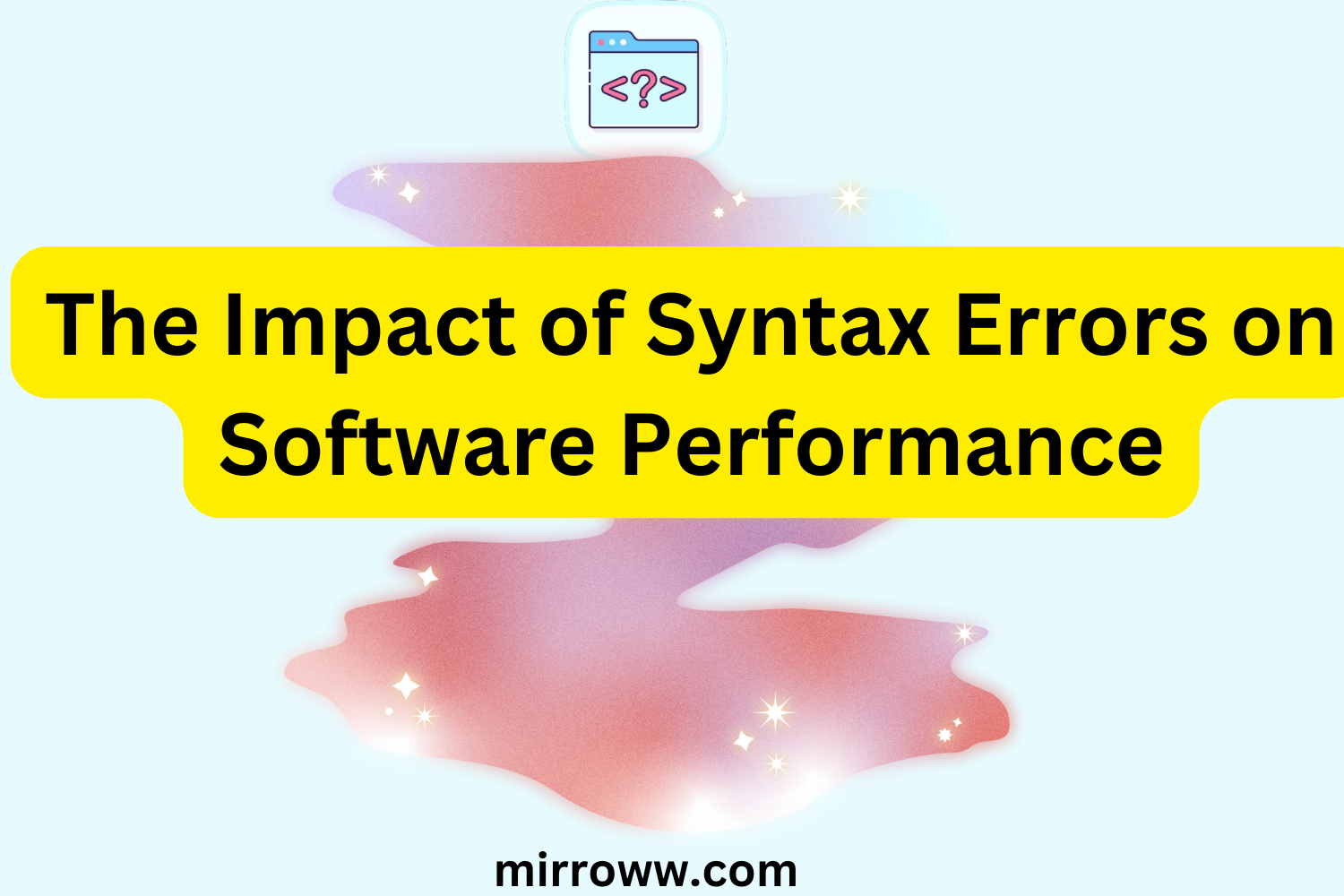
The Impact of Syntax Errors on Software Performance
Imagine driving a sleek sports car—its engine roaring, ready to deliver peak performance. But what if a small pebble lodges in the gear mechanism? Suddenly, your perfect ride stutters. In the world of software, syntax errors are those tiny pebbles. While they may seem insignificant, their impact on speed, functionality, and overall performance is monumental.
Let’s dive into how syntax errors, those pesky little hiccups in code, can bring even the most robust applications to a screeching halt.
What Are Syntax Errors?
Before we get to the nitty-gritty, let’s define syntax errors. In programming, syntax refers to the set of rules that dictate the structure of code—think grammar for computers. A syntax error occurs when code violates these rules, making it incomprehensible to the compiler or interpreter.
Common examples include:
- Missing semicolons in languages like Java or JavaScript.
- Mismatched brackets or parentheses.
- Incorrectly spelled keywords.
- Omitting required components, such as headers or declarations.
Essentially, syntax errors prevent code from running altogether. Unlike logical errors that cause unexpected results, syntax errors are outright roadblocks.
How Syntax Errors Affect Software Performance
1. Development Delays
Let’s set the scene: You’re burning the midnight oil, racing to meet a project deadline. Suddenly, the compiler throws a tantrum because of one missed semicolon. Syntax errors halt progress, forcing developers to comb through lines of code to pinpoint the issue. This delay can snowball, affecting timelines and productivity.
2. Increased Debugging Time
Debugging syntax errors can feel like finding a needle in a haystack—especially in large codebases. Time spent fixing these errors diverts resources from optimizing and enhancing software.
3. Compilation and Runtime Impacts
Though syntax errors typically stop code from compiling, those sneaky edge cases—like inconsistencies in dynamically typed languages—can slip through. The result? Unpredictable runtime errors that slow software performance or, worse, cause crashes.
4. Compromised Functionality
Picture this: A developer writes a new feature, but a minor syntax error goes unnoticed. The feature fails to integrate properly, leading to partial or broken functionality. Users experience frustration, which ultimately damages the software’s reputation.
5. Ripple Effects on Team Collaboration
In collaborative environments, one developer’s syntax mistake can disrupt the entire team. Shared codebases rely on clean, error-free contributions. Syntax errors introduced by one member can cascade into larger integration issues.
Why Syntax Errors Matter for Software Performance
The stakes are high. A syntax error can:
- Stall application launches.
- Inflate development costs.
- Damage user experience and brand reputation.
- Increase long-term maintenance requirements.
But the story doesn’t have to end here. Understanding the root causes and leveraging effective strategies can mitigate these risks.
Strategies to Minimize Syntax Errors
1. Leverage Modern IDEs and Code Editors
Integrated Development Environments (IDEs) like Visual Studio Code and IntelliJ IDEA offer built-in syntax checking. These tools highlight errors in real time, sparing developers the pain of manual debugging.
2. Adopt Coding Standards
Team-wide adherence to coding standards reduces syntax errors significantly. Consistency in naming conventions, indentation, and structure fosters cleaner code and minimizes mistakes.
3. Automated Testing Tools
Unit tests and linting tools act as safety nets, catching syntax errors before they wreak havoc. Tools like ESLint for JavaScript or Flake8 for Python ensure that code adheres to best practices.
4. Code Reviews and Pair Programming
Two sets of eyes are better than one. Regular code reviews and pair programming sessions encourage accountability and reduce the likelihood of syntax errors slipping through.
5. Continuous Integration Pipelines
Automating the build and deployment process ensures syntax errors are flagged early. Continuous integration tools like Jenkins or GitHub Actions streamline this process.
The Hidden Costs of Ignoring Syntax Errors
Ignoring syntax errors might save time in the short term, but it’s a false economy. The long-term repercussions include:
- Technical Debt: Accumulated errors compound, requiring extensive refactoring later.
- Security Vulnerabilities: Overlooked syntax issues can introduce exploitable loopholes.
- User Churn: Frustrated users abandon buggy applications.
Investing time in error-free code isn’t just good practice—it’s essential for software longevity.
Final Thoughts: The Syntax Success Formula
Think of syntax as the foundation of your software’s skyscraper. One misaligned brick—or semicolon—can compromise the entire structure. But with the right tools, practices, and mindset, syntax errors can be transformed from stumbling blocks into stepping stones.
Remember, the goal isn’t just error-free code; it’s delivering software that performs seamlessly and delights users. So the next time your compiler screams about a missing bracket, take a deep breath. That tiny pebble is a chance to polish your masterpiece.
Case Study: Solving a Complex Syntax Error in a Real Project